Ants are some of the most successful insects to make into cars, mainly due to their small size. They can live in cars for short periods or they may even nest in cars parked for a long time or that are out of use.
Typical cars used daily may also attract a small number of ants. Food and shelter are among the first reasons ants might be looking to get inside cars.
Table of Contents
Why Are There Ants in My Car?
Ants love food and spend the entire day looking for it. Harvester ants look for food they can bring back to their nest or colony which means they seek out even more food they can eat.
Here are some of the main reasons ants might occasionally or routinely be found inside your car.
The car is parked next to an ant mound
Proximity to ant mounds is one of the main reasons so many ants can make their way into the car.
Even a car used daily may have plenty of ants inside if you park it next to an ant mound.
Ants can climb vertical surfaces even if they are slippery, which is the case with cars.
They look for food and don’t back down from exploring their options.
Ants are also very good at leaving scent traces on a food source they’ve already discovered. They will climb or enter your car if it blocks their typical trails to and from the food source.
There’s plenty of leftover food in the car
Fruits and spills are among the first types of foods that attract ants in cars. Quickly picking up a scent, ants are good at identifying the leftover foods in your car as their food.
A single ant can be all it takes for hundreds or thousands of ants to eventually make it inside the car as it leaves chemical traces for others to follow to a food source.
Sugary foods are among the first types of foods people consume in cars as snacks. These types of foods are known to attract a high number of ants.
High moisture levels inside the car
High moisture is one of the problems that attract ants to the car. Moisture ants or yellow ants live in Eastern US territories down to Florida.
These types of ants might enter cars that have a water leak problem.
A faulty car window or a door that doesn’t close properly can lead to a moisture problem inside the car.
High constant moisture can attract ants that prefer moisture, which are different types of ants compared to sugar ants found in homes with plenty of food around.
Why do you need to identify ants species in your car?
Ants in cars are problematic. They can be annoying but they can also cause damage or even help spread bacteria and trigger allergies.
Here’s why correct species identification of ants in your car is important.
Because different ants need different baits
Not all ants can be eliminated with the same types of baits. Various species of ants around the world need different types of bait.
Flying ants are attracted to light and zapper-like baits tend to be highly efficient against them.
On the other hand, army ants are blind and light-based baits don’t work for the species.
The type of bait used to eliminate ants may differ from one species to another even if most ants are simply killed by a typical gel or liquid bait as they make it into cars for sugary foods.
Different ants cause different types of damages
Correct species identification means you know what type of damage to look for in your car.
A few common damages apart from the bites of biting ants include those to the car.
- Wiring damages
The most problematic type of damage to the electrical system of a car is wiring, as it can be difficult to spot.
Singapore ants are some of the most problematic species for vehicle wiring. These ants simply chew through wiring until they cause a malfunction.
- Foam and insulation damages
Fire ants and carpenter ants can cause small or considerable damage to car insulation materials such as foam.
These types of ants may also eat through wiring, similar to Singapore ants.
- Wood damages
Carpenter ants are attracted to wood. New pieces of wood are less likely to attract these ants.
It’s old wood, rotten wood, or damp-affected wood that attracts these ants.
Old cars with plenty of wood paneling might be susceptible to damage caused by these ants.
The damages can be considerable, making wood trim not usable.
- To understand where they nest
All of these types of ants found in cars need to be eliminated with their nests. Killing the ants in the car might not be sufficient if you do not identify their nests.
Here are some of the common places in or around the car various types of an ants nest.
Singapore ants – they nest in man-made buildings and electrical components of cars and homes
Carpenter ants – moist wood either inside or next to the car
Fire ants – open areas on the lawn, in the garden, or less frequented areas
Sugar ants – under rocks, under logs, around trees, or in fallen hollow branches
types of ants found in car
Almost all types of ants can be found in cars. Some of them might even nest in cars with plenty of food crumbs and humidity.
Carpenter ants
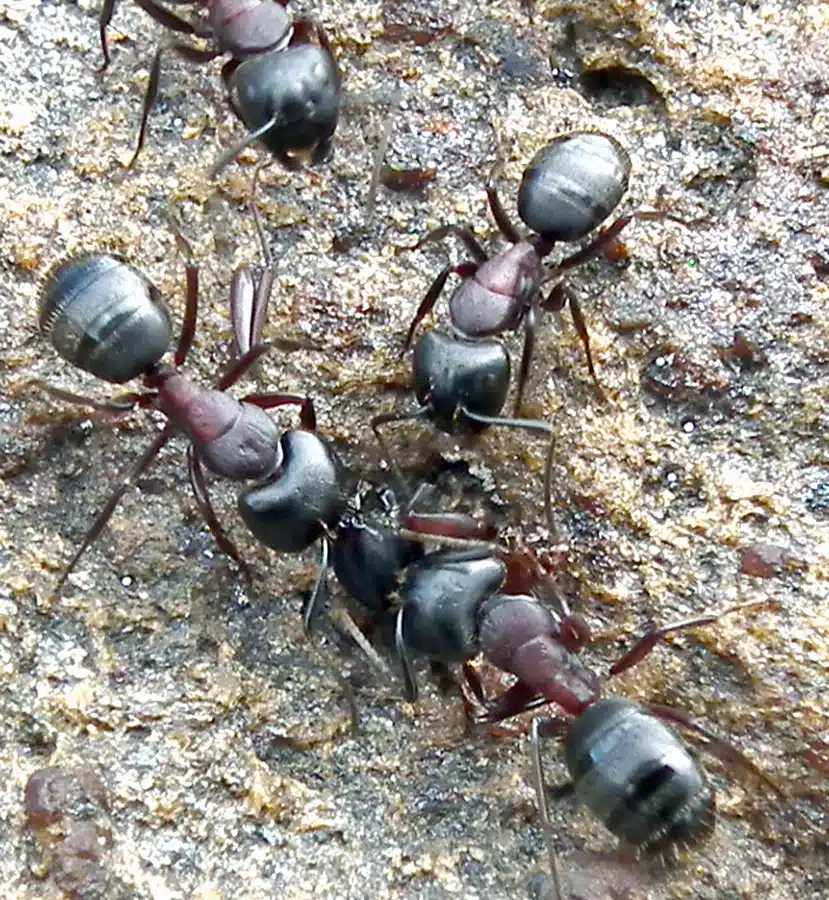
Carpenter ants (Camponotus genus) have a size between 8 and 25mm. Most only grow to a size of 13mm.
Different colors are specific to these types of ants. Black, red, and even orange are colors Carpenter ants come in.
A diet rich in sugar and proteins is specific to these ants.
They can feed on dead insects around the car as well as sugary foods, syrup spills, soda drink spills, or jelly sweets lying around the car.
These types of ants might arise in cars that carry children as sugary foods and spills are specific on the backseats carrying children.
Crazy ants
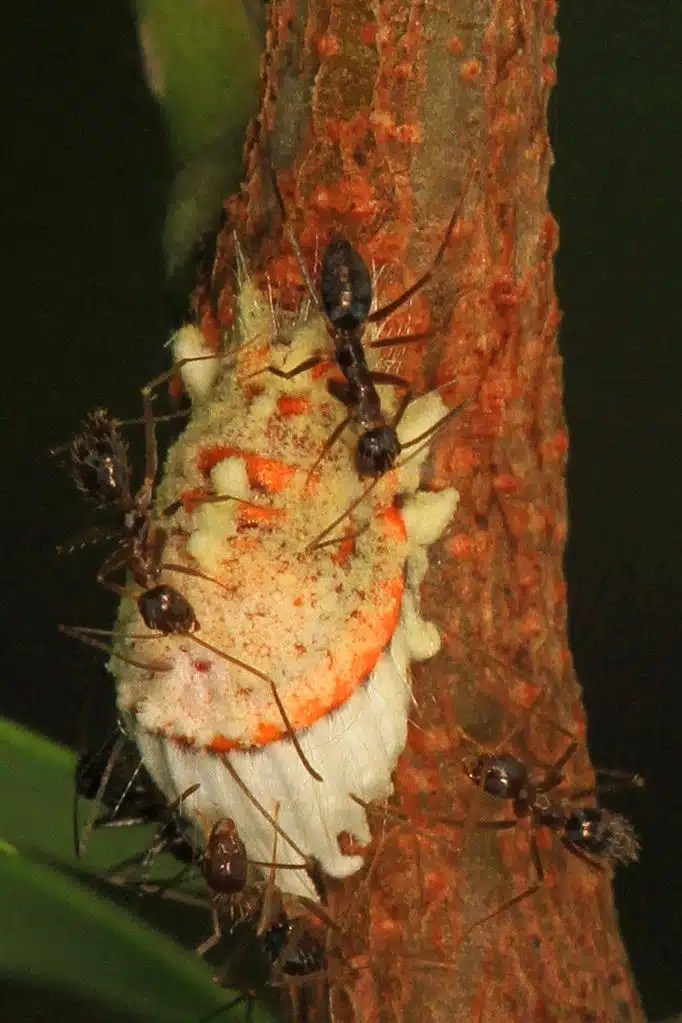
Crazy ants (Paratrechina longicornis) have a red-brown color. These ants are very small and may only measure 2-3.3mm.
Apart from having the capacity to bite, crazy ants can find foods in cars to feed on.
Dead insects, meats, sugar-rich foods, and almost all other types of liquid spills that aren’t water can attract these ants inside the car.
Singapore ants
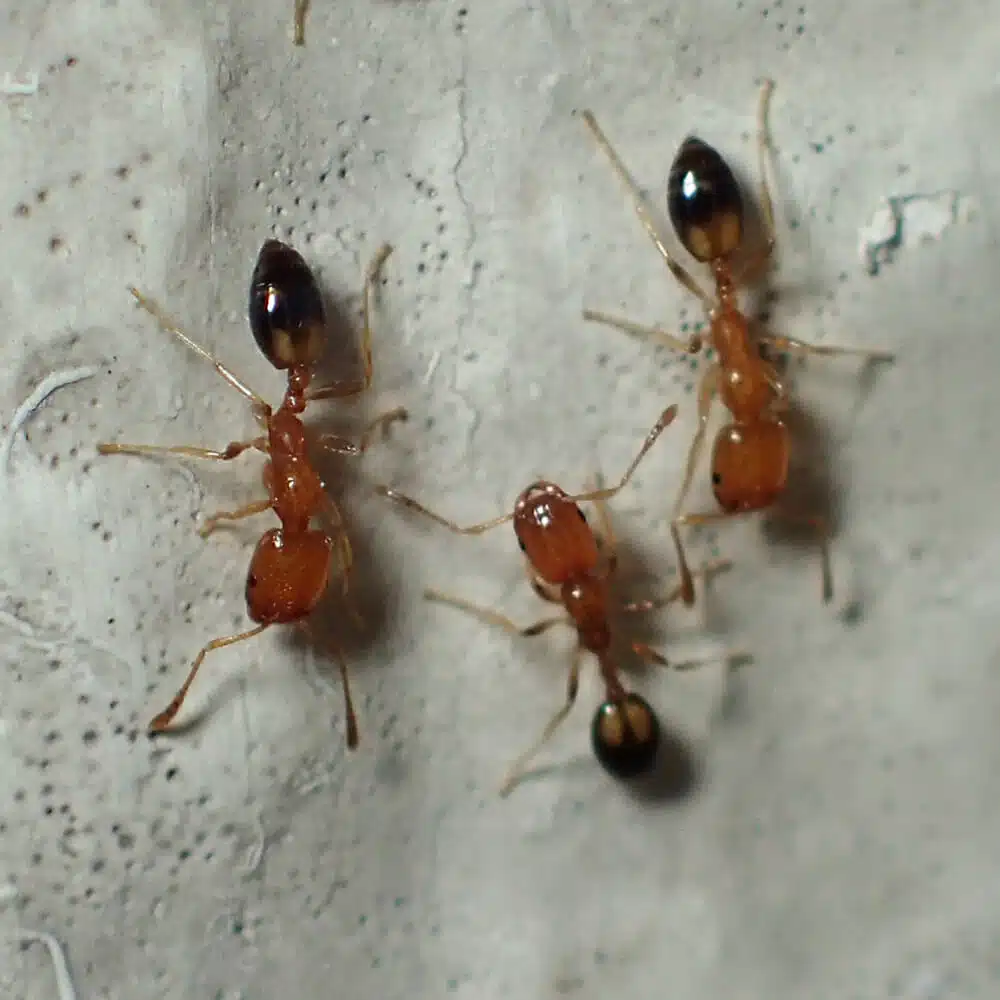
Singapore ants (Monomorium destructor) can be as large as Crazy ants, growing to a size of up to 3.5mm.
These ants have a light yellow color which may sometimes appear darker, closer to brown.
All types of sugary plants with plenty of nectar left inside the car can attract these ants. Fruits, particularly rotting fruits that release sweet juices also attract these ants.
Fire ants
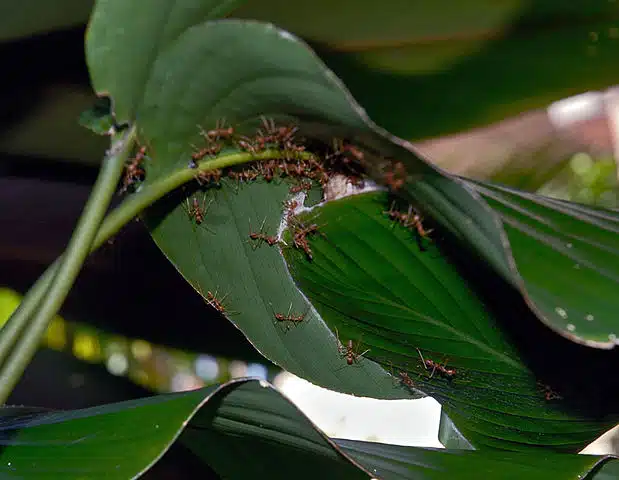
Fire ants (Solenopsis genus) may be slightly larger than other ants in cars, growing up to a size of 5mm. Workers can be smaller as well.
Both insects and sugary foods may attract these ants inside the car. Make sure to clear the car of leftover foods as well as flies and spiders as these are seen as food by fire ants.
Sugar ants
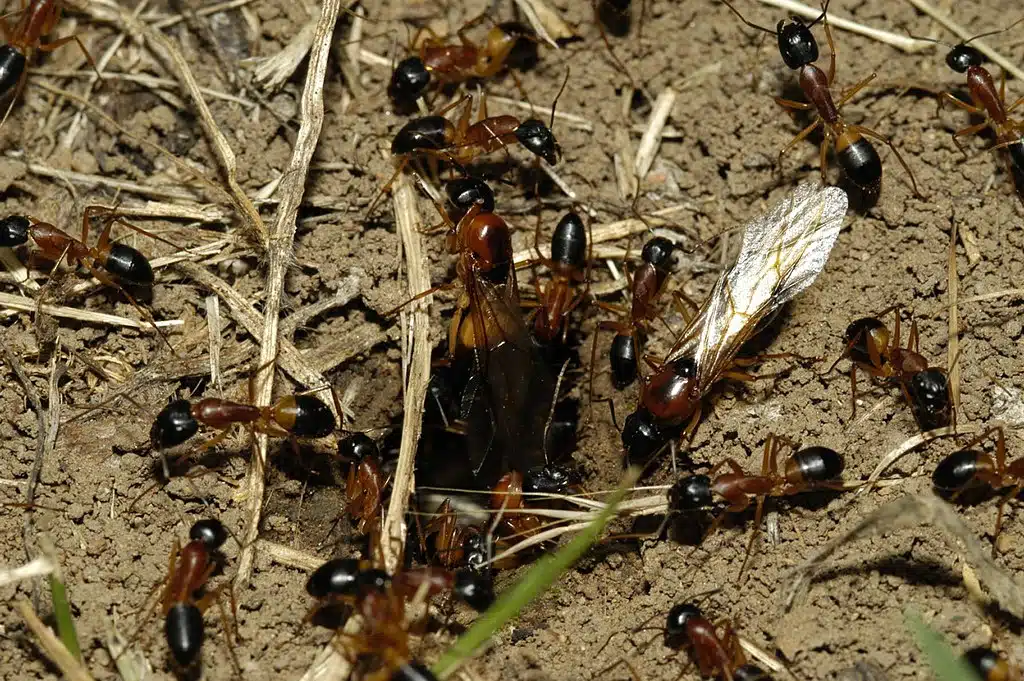
Also known as Banded sugar ants, these ants (Camponotus consobrinus) are mainly attracted to warmth and humidity in your car. Yellow to brown, these ants might stick around the car whenever they find sugary foods and small insects to feed on.
There are higher chances of Sugar ants getting inside a vehicle whenever the car is parked next to woodlands.
Moisture ants
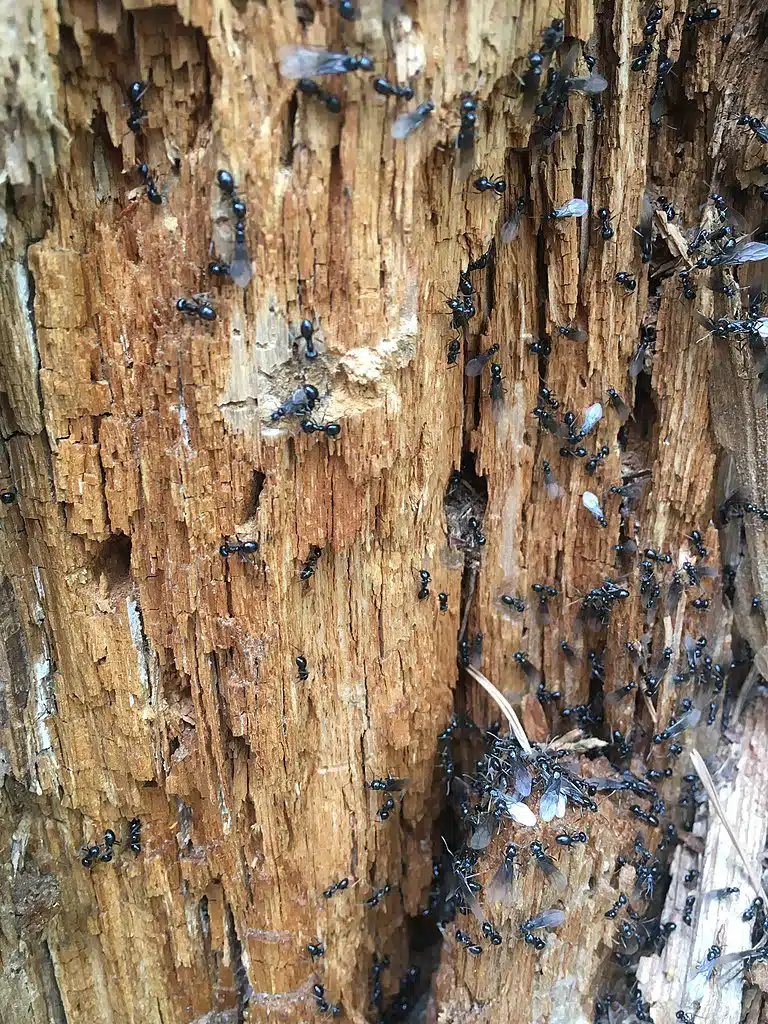
Yellow to dark brown, moisture ants (Lasius genus) is similar to Carpenter ants. This group of ants includes multiple species, all attracted to moisture-affected wood.
Cars parked next to logs, firewood, lumber, and other types of moisture-affected wood are the most likely to be infested by these ants.
Finding these ants in your car means you need to locate their nearby nest, located in or under a piece of decaying wood.
Where Can Ants Hide in My Car?
All ants are going to be closer to their food source within the car. Their hiding spots or the areas of the car they are found in most times are also the areas with food.
Electric parts and wires
Wiring in and around the engine block is one of the main parts of the car where ants can be found.
Other types of wiring around the car also attract some types of ants.
Accessible wiring in the trunk might also attract some species which might chew through the plastic covering of wires.
Car vents
One of the easiest ways for ants to get inside the car is by following air vents. They can be attracted to smells of food or crumbs inside the car whenever they’re around air vents.
Old air filters might allow ants to easily make their way into the car by following air vents.
Door frames
Door frames are hollow and provide the perfect shelter for ants that love humidity and warmth.
Make sure to check the crawl spaces inside the door paneling to locate all ants within the car.
Engine blocks
Warm and hidden from predators, the engine is one of the main areas of the car where ants live. Organic buildup from driving around can attract ants to this part of the car.
Vegetation and food traces under the engine are sometimes the only area in which car ants are interested.
Under seats
Food crumbs and spills are most common on car seats. These are known to attract almost all ants.
Sugary drinks and fruit are among the foods with the highest appeal to ants that like sweet foods.
In the trunk
Most people carry groceries in the trunk. Fruits and vegetables are sometimes forgotten in the trunk.
This is why most ants might be attracted to this area of the car. Even a single piece of rotting fruit might be sufficient to attract nearby ants.
Why do You Need to Remove Ants in Your Car?
Taking quick action against ants is recommended whenever you spot them in your car.
While they may seem harmless, they can lead to more problems in the long-term.
Ants are a nuisance pest
Many ants in cars don’t bite and don’t create damage to the vehicle.
Removing them is a vehicle cleanliness practice that ensures your car is clean and safe for the entire family.
Some ants can bite
Fire ants, harvester ants, and field ants are known to bite. These bites might be numerous whenever there are more ants in your car.
Ant bites can affect you as a driver as well as other family members traveling in a car, such as children in the backseat.
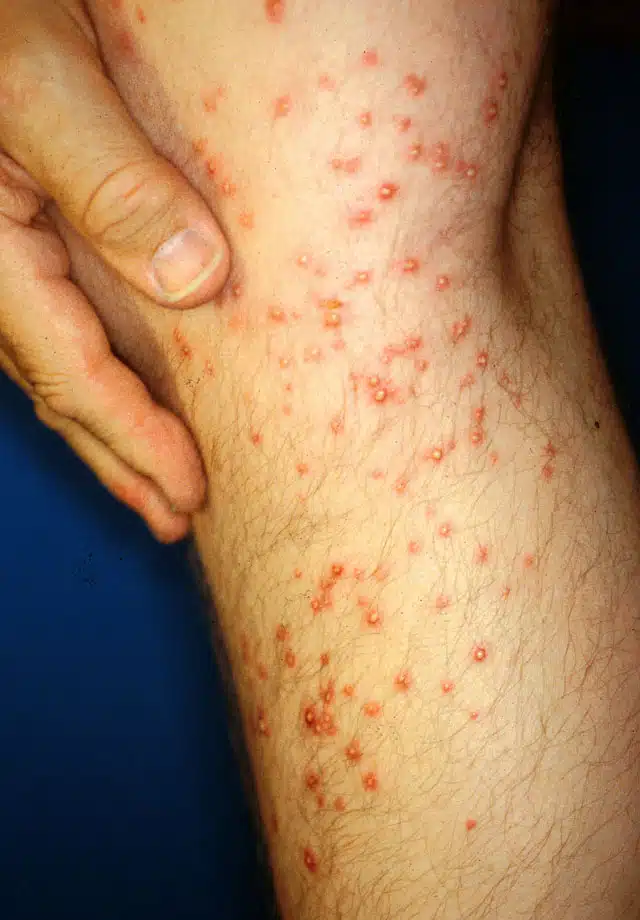
Ants can spread disease
Ants can be vectors of disease-spreading. They can get on foods such as snacks in cars which people alter consume.
Ants that love moisture are particularly known for getting onto foods and into areas with bacteria which they can spread to humans.
Salmonella and E.coli are among the pathogens spread by ants, mainly onto foods we eat.
Minor or serious car damages
Ants can cause minor damage to the car such as eating through foam seats or foam sealing.
They can also cause serious car damage by chewing through wiring and electrical components.
Chewed wiring insulation is one of the biggest problems ants can cause in cars.
Old cars with wood paneling affected by dampness can be impacted by carpenter ants as well.
Ants attract bugs and insects
Ants aren’t as big of a problem as other bugs and insects. They can cause considerable problems by attracting larger predators in or near the car.
Ants are seen as food for flies, spiders, and caterpillars.
Even dangerous spiders such as Brown Recluses and Black Widows. These are venomous species that might require medical attention in the case of a bite.
Ants can trigger allergic reactions
Not all ants trigger allergic reactions. Its car owners with respiratory problems are most at risk for ants that are responsible for allergic reactions.
Research shows people with asthma are the most exposed to further allergic reactions in certain types of ants.
Studies show you can get skin allergies to pharaoh ants if you suffer from asthma.
Ants can spread into multiple nests
Letting ants multiply uncontrollably poses a risk of them splitting into sub-colonies and into them creating secondary nests.
This means ants in or around the car could be nesting in multiple areas and become more difficult to eradicate.
While not all ants can split into sub-colonies, wood ants are known to use multiple nests as they grow in high numbers in the first original nest.
Ways to Get Rid of Ants in Car
You can get rid of ants by combining multiple methods such as finding a different parking place and cleaning the car regularly.
1. Park in a Different Place
Parking location is among the most important elements when it comes to possible car invasions.
Parking lots near woodlands are particularly vulnerable when it comes to ants in cars.
Even a parked car next to trash cans might be subject to vulnerability as ants look for food in all types of places.
2. Vacuum
All ants and their eggs can be eliminated with frequent vacuuming. You can use an injection-extractor vacuum cleaner to eliminate ants and formic acid on the car seat upholstery.
Vacuuming also removes all food crumbs, one of the main reasons ants make it into cars in the first place.
3. Clean the car’s interior
Vacuuming might not be sufficient to eliminate ants. You also need to clean areas such as the engine bay as well as air vents, locations known to host a series of intruders including ants.
Using a dedicated cleaner or detergent also helps keep ants away.
4. Wash your car
Washing the outside of the car also helps kill and remove ants. Pressure washers and car wash soap are ideal to remove ants.
Frequently washing the car also eliminates organic material buildup such as leaves sucked underneath windshield wipers or vegetation buildup around the wheels.
5. Spray essential oils
Spraying essential oils both inside the car and on its outer body panels helps keep ants away.
Highly aromatic essential oils are best against ants.
You can mix peppermint or clove essential oils in water when washing your car or simply spray it around the interior and the exterior of the vehicle after washing and vacuuming.
6. Ant and bug sprays
Dedicated or multipurpose ant killers are another viable solution against ants in cars.
You can consider these sprays if you’ve already found ants in your car. All areas of the vehicle can be sprayed, including the trunk and the spaces under the seats.
7. Fogger
Foggers are useful for heavy car ant infestations. You can consider foggers for all areas where your ant killer spray cannot reach.
One of the advantages of using a fogger is that it doesn’t leave any type of residue on your car’s plastic materials or upholstery.
8. Bug Bomb
Bug bombs may be health detrimental whenever used in small spaces such as inside the car.
You can use bug bombs in the area around the car if you cannot park it elsewhere.
Make sure to seal and check all car door and window gaps before as ants might escape to the car whenever you use a bug bomb nearby
9. Bait
Liquid or gel baits are common solutions for ants in vehicles. You can consider baits for buses, vans, and other large vehicles which may attract a larger number of ants.
10. Hire a pest controller
It might be time to call a professional if your methods haven’t successfully eliminated ants from cars.
You might need to spray pesticides in the area of your car for a heavy-duty chemical anti-ants solution.
Pest controllers are best suited for this task.
How to Prevent Ants in Car
Preventing ants inside the car is easier than dealing with an infestation.
Don’t eat inside the car
Food attracts almost all types of ants inside the car.
You need to ensure your car is free of food and food odors that attract ants but also other types of bugs and insects.
Snacking inside the car on a long journey should be followed by a deep cleaning session.
Frequently vacuum and wash the car
Vacuuming removes all foods, even the smaller crumbs which attract ants.
Make sure you vacuum your car regularly to avoid food building.
You should also remember to vacuum areas that are hard to reach, such as the space under the front seats where food traces can build up over time.
Clean juice spills immediately
Sugary drinks are good motivation for ants to make it into the car. Spills often go unattended in cars.
Soap and water might be the simple solution to clearing all sugar residue resulting from sweet drink spills in the car.
Park away from light sources
Some ants such as flying ants are attracted to light.
Cars parked next to a light source are often seen as a target for ants.
Ants are neither fully attracted nor fully turned away by lights.
Many plan to hide in high-humidity moist areas in the summer. You should aim to park your car away from a light source at least in the spring and in the fall.
Species such as redwood ants and flying ants are attracted to light outside the warmest months of the year.
Summary
You can get rid of ants in cars only by removing all food traces and cleaning all juice spills.
Refraining from eating inside the car is one of the top preventive measures for cars that are free of insects.
Sugary foods and the presence of other insects such as flies inside of the car only attract ants inside as well. Regularly washing the car and parking it in a different location can also help keep the vehicle ants-free.